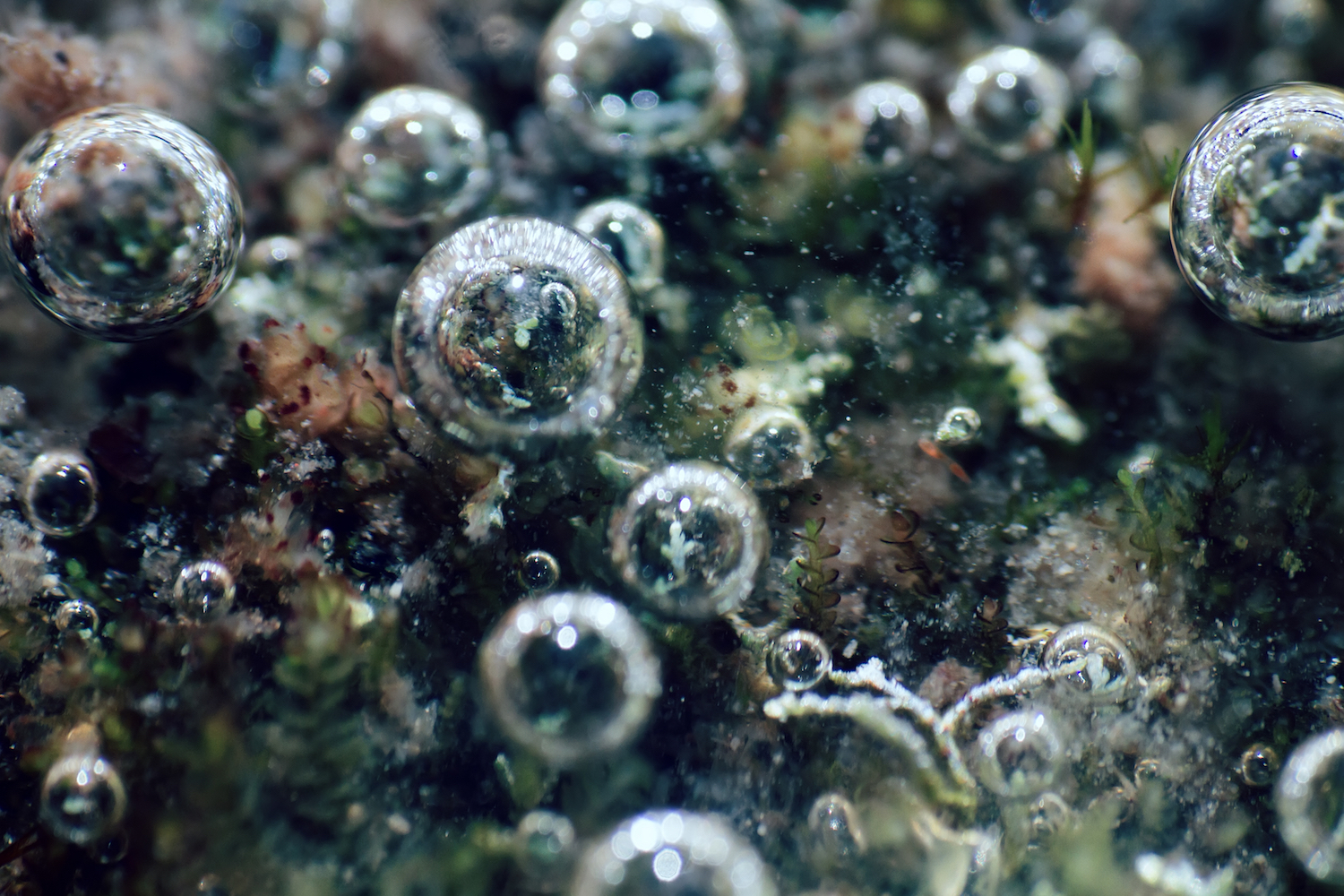Here's What Photosynthesis Sounds Like Underwater

If you listen closely, you can hear little plants harnessing the sun's energy. All you have to do is dive underwater and listen for the faint but distinctive "ping!" that red algae make while carrying out photosynthesis, a new study finds.
Just like plants on land, algae photosynthesize — essentially using the sun's rays to turn molecules of carbon dioxide and water into sugar and oxygen gas. Underwater, those teeny tiny oxygen bubbles rush upward. As these bubbles detach from the plant, they make a short "ping" sound, the researchers found.
"Many such bubbles create a large, distributed sound source over the seafloor," the researchers wrote in the study, published online Oct. 3 in the journal PLOS ONE. These noteworthy pings may help researchers monitor the health of coral reefs covered by these algae, they said. [In Photos: Diving in a Twilight Coral Reef]
The researchers first noticed the pings in Hawaii, when they discerned that healthy, protected reefs were making low-frequency sounds, while damaged reefs seemed to call out in higher-pitched sounds, Hakai Magazine reported.
"We were told the sound was from snapping shrimp, end of story," Simon Freeman, who works with his wife and study co-researcher Lauren Freeman as an oceanographer at the U.S. Naval Undersea Warfare Center in Rhode Island, told Hakai Magazine. "[But] there seemed to be a correlation between the sound and the proportion of algae covering the seafloor."
To learn more, the Freemans and their research team transferred 22 lbs. (10 kilograms) of invasive red algae (Gracilaria salicornia) collected from Hawaii's Kaneohe Bay into a tank filled with seawater. This helped them analyze any sounds the algae made, away from the clamor of the noisy ocean.
The experiment worked; the scientists recorded high-frequency pings, which sounded like the dings they heard from the distressed reefs.
Get the world’s most fascinating discoveries delivered straight to your inbox.
Part of the corals' distress comes from algae that are smothering them, the researchers said. People are to blame for some of these algae spikes, largely because of overfishing of the fish that keep the algae in check, pollution from nutrient runoff and climate-change effects, they said.
Given that high agal cover is a strong indicator that coral reefs are struggling to survive, it's possible that monitoring the sounds of these agal bubbles could be a fast and noninvasive way for scientists to keep tabs on coral reef health, the researchers said.
"Right now, reefs are evaluated visually by divers," Simon Freeman told Hakai Magazine. But this method is expensive and time intensive, so "in the future, it might be possible to quickly listen to a coral reef soundscape, perhaps by using an autonomous vehicle, and evaluate how it may have changed from the previous year."
- Plant Photos: Amazing Botanical Shots by Karl Blossfeldt
- Sacred Datura: Photos of a Beautiful (But Poisonous) Plant
- In Photos: Mexico's New Ocean Reserve Protects Stunning Biodiversity.
Originally published on Live Science.

Laura is the managing editor at Live Science. She also runs the archaeology section and the Life's Little Mysteries series. Her work has appeared in The New York Times, Scholastic, Popular Science and Spectrum, a site on autism research. She has won multiple awards from the Society of Professional Journalists and the Washington Newspaper Publishers Association for her reporting at a weekly newspaper near Seattle. Laura holds a bachelor's degree in English literature and psychology from Washington University in St. Louis and a master's degree in science writing from NYU.


